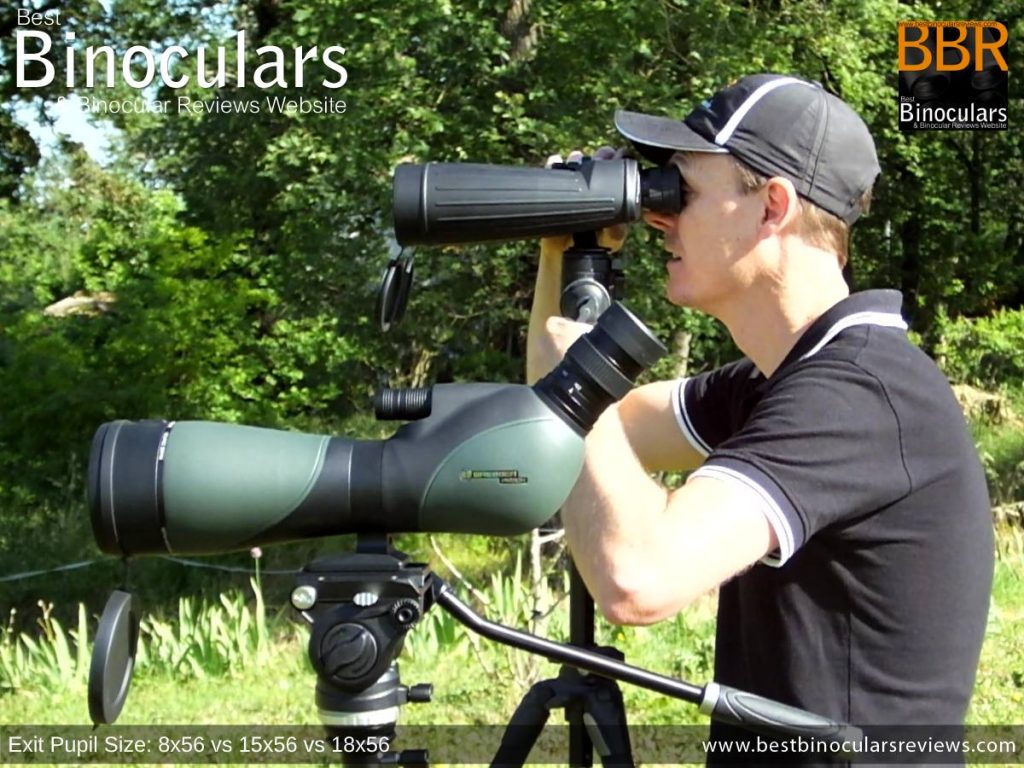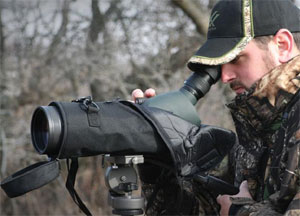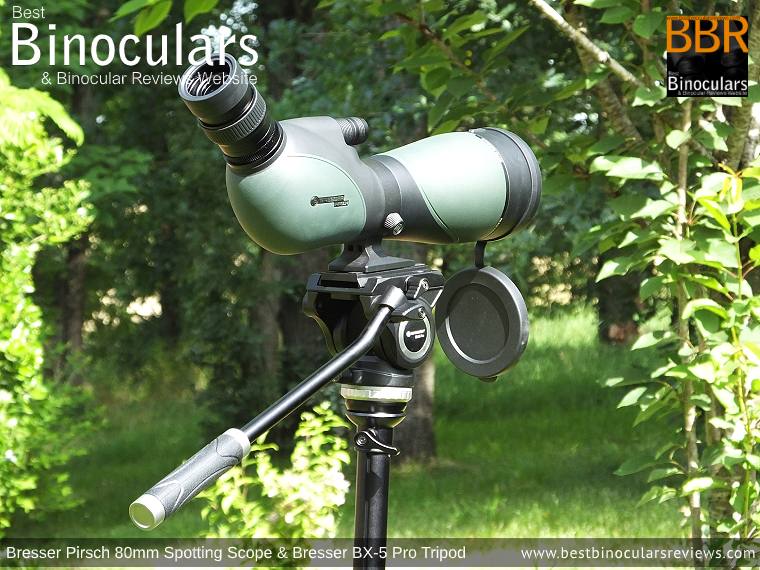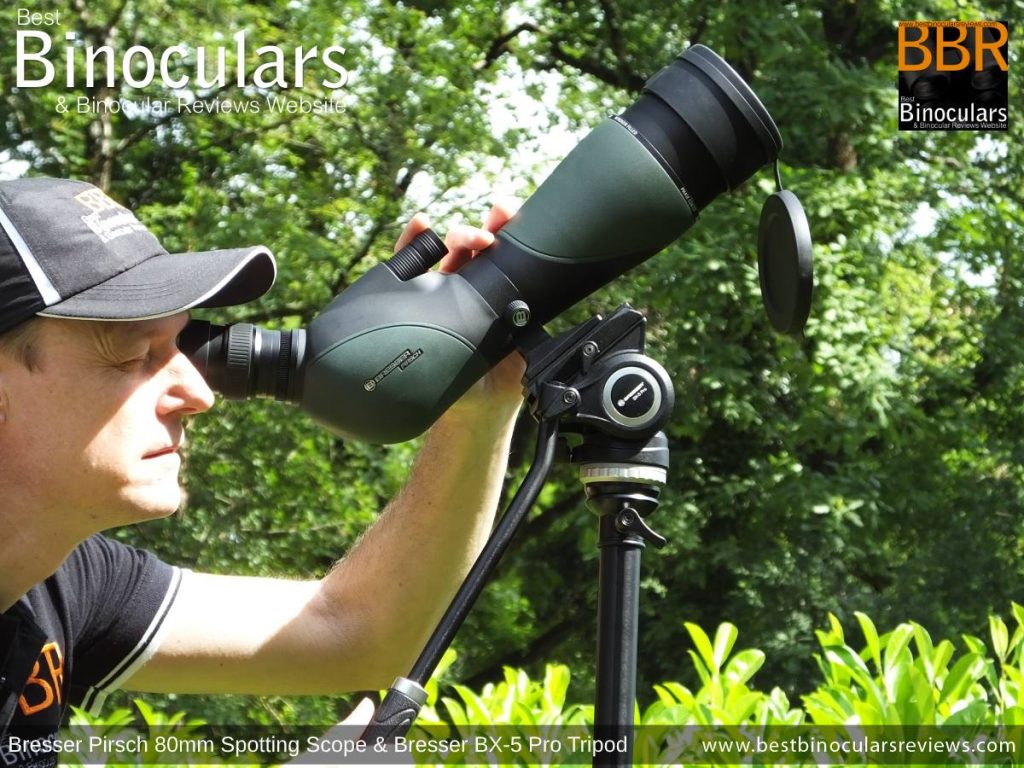Top 5 Reasons To Get a Spotting Scope to Compliment Your Binoculars

For experienced birders, hunters, or general nature enthusiasts, a spotting scope is very often seen as a valuable tool that plays a slightly different role than a pair of binoculars can and will almost certainly enhance your experience and enjoyment of being outside and enjoying nature.
However, for those new to outdoor sporting optics, the different roles a scope provides are not always that clear, and thus to help you out, here are my top 5 reasons why you should consider getting a spotting scope to go with your binoculars:
1. Higher Magnification / Bigger Zoom Capabilities

One of the main advantages of your average spotting scope over a binocular is its more powerful magnification.
Spotting scopes can typically zoom in much closer than binoculars. So your average binocular may have an 8x or 10x magnification, whilst many scopes will have a maximum power of 60x or even more in some cases.
Whilst high magnifications have their downsides, it does make them ideal for observing distant objects such as birds and larger wildlife at longer ranges.
With a good quality spotting scope, you can see details that would be impossible to observe with the naked eye and probably only just visible with a typical binocular.
2. Zoom = More Magnification Options
As well as a higher maximum power, most spotting scopes will come with a variable magnification eyepiece, which enables you to more easily find and then lock onto your subject and then zoom into it to get a more detailed view.
As well as this there are also even more options to fine-tune your experience with low-powered scopes suitable for most general uses to high-powered scopes designed for long-range viewing.
This means that you can choose a spotting scope that’s tailored to your specific needs and activities.
For example, a high-powered spotting scope might be ideal for long-range target shooting, while a lower-powered scope might be more suitable for general birdwatching or nature observation.
Also just keep in mind that with many high-end scopes, you can swap eyepieces, and thus change the zoom capabilities depending on your needs without having to buy more than one scope.

3. Increased Image Brightness in Low light
Spotting scopes generally have larger objective lenses than your average pair of binoculars, typically ranging from 50mm to 100mm in diameter, whilst most binoculars come with 32mm or 42mm lenses.
So as long as you keep the magnification setting (zoom level) down, it often results in a nice large exit pupil.

Thus if you get yourself a good scope with high-quality optics, it will not only provide crisp, clear images even at high magnification levels, but the larger objective lenses allow more light to enter the scope and thus can create brighter, sharper images.
This can make a big difference when observing wildlife or trying to identify birds or distant targets while hunting or shooting, especially in conditions where the light is not optimal.
4. A Different Type of Versatility
Being smaller, and not usually needing a tripod or monopod, and thus easier to carry about, binoculars are I would say more versatile in general than a scope.
However, spotting scopes are also highly versatile optical tools, but just in a different way, and thus rather than thinking of it in terms of a binocular or a scope, you should consider them as complimentary to each other:
Like binoculars, scopes can be used for a variety of outdoor activities. Whether you’re birdwatching, hunting, viewing targets at the range, or enjoying the scenery, a spotting scope can enhance your experience and help you get the most out of your time outdoors.
Also don’t forget that you can turn your scope skywards and take a closer look at things like planes during the day as well as the moon, stars, and planets at night, where you will get a more detailed view than you can with most standard binoculars.

5. Better Positive Identifications
Spotting scopes typically have a magnification range of 20x to 60x, which means you can zoom in on a distant object and see it in more detail than your binoculars
This can help you improve your accuracy and precision in positively identifying a bird’s plumage or details such as antlers when hunting or shooting.
Conclusion & Further Information
In conclusion, a spotting scope is a versatile and powerful optical tool that can greatly enhance your outdoor experience.
Whether you’re a birdwatcher or hunter, or just love spending time in nature, I feel a good spotting scope is a great investment that will allow you to see the world and its wonders in a slightly different way to which you can with binoculars.

 Article | Posted by Best Binocular Reviews
Article | Posted by Best Binocular Reviews 
 Categories:
Categories:  Tags:
Tags: 
